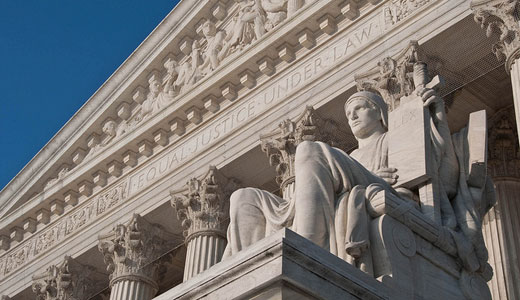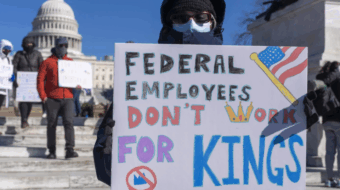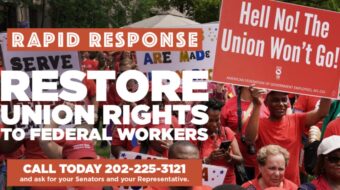
The Supreme Court’s latest assault on the Labor Movement – Harris vs. Quinn – shows how essential it is for Democrats to win the White House in 2016.
The 5-4 decision stops unions from collecting fees from nonmembers who provide home-care services through a government agency.
It seems like a narrow ruling, but it’s a door opener for conservatives to eventually starve-out public sector unions. Under Harris, though workers receive the benefits and protection of a collective bargaining agreement, they have no obligation to help finance the union that makes that possible.
Unionized government employees – city, county, school district, state, federal, etc. – now comprise more than half of all union members in the U.S. And unions with public-sector contracts will certainly move aggressively to sign-up nonmembers.
Nevertheless, imposing a “right-to-work” protocol throughout the public sector could be next for Roberts and Alito. This would probably take more than one case and several terms. The court’s future ideological balance – likely determined by the next president – will be crucial.
As expected, Harris has triggered interesting suggestions among labor academics and others for reforming how unions organize and operate.
Georgetown University’s Joe McCartin, for example, wrote after Harris that unions “need to respond now by building wider and deeper public support for a new, community-based approach to collective bargaining, support that can withstand hostile court decisions.”
He points out in Dissent that unions “are often only permitted to bargain around issues – pay and benefits – that make it easier for their opponents to portray bargaining as a win-lose proposition pitting unions against hard-pressed taxpayers.” McCartin proposes what he calls a “common good” approach to bargaining which includes issues such as a community’s quality of life, corporate tax breaks, tuition levels, minimum wage, etc.
Good ideas from McCartin, many of which are already happening. Substantial and remarkable strides have been made by unions in building broad-based coalitional strategies around economic justice and campaigns to raise wages for the working poor. The Los Angeles Labor Movement has been especially innovative and effective on these issues.
But that doesn’t remove the immediate and intense threat posed by the court’s current majority.
In California in 2012, unions mobilized to defeat Prop 32, which would have eviscerated Labor’s political clout in the state. In 2016, the Labor Movement will again be fighting for its life. Going all out to keep the Republican Right from gaining the presidency and carrying out its top agenda item: Total destruction of the labor movement.
The above article is reprinted from the blog laborlou.com.
Photo: “The Guardian” or “Authority of Law” statue by James Earle Frasier in front of the U.S. Supreme Court building in Washington. Mark Fischer // CC 2.0










